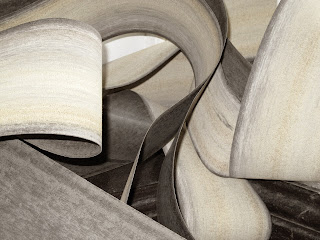Wednesday, 26 December 2012
Tuesday, 25 December 2012
Jkb Fletcher
Monday, 26 November 2012
skin research
Some people think of it as the body's major organ—which it is. Others look at skin as a biological map of the history of early human migration patterns—which it could be.
Many people see it as a canvas to be decorated with tattoos and other markings—to convey group membership, convey beauty, or mark rites of passage.
SPENCER TUNICK
You get all shades of colors—browns, yellow, tans, many, many pinks—all molded together, forming a sea of color, a kind of visual poetry," said Tunick. "The work is a celebration of public space, and to me, people and bodies are the most beautiful thing that you can put in a landscape, as opposed to objects."
writhing mass of humanity: bodies strewn across a landscape, limbs akimbo.
Tuesday, 6 November 2012
Jackson Pollock
An artist that I knew about even before viewing his work! Extremely well known and renowned around the work and especially amongst art students, I am actually only doing some research on him now. It was his work, and dripping paint technique that influenced some of my work where I dripped thick grey emulsion down across my previously heavily painted board.
He made the transition from using his wrist and hand to paint to using his entire body to pour paint from all possible angles onto the canvas.
Not only am i interested in pollocks works but also in his life. You can even see in his paintings a Part of his personality, which was said to volatile and and inconstant. It is thought that Pollock suffered from bipolar disorder, and was a heavy alcoholic. His paintings are chaotic and dark, which lighter spashes of brighter colours, which in my opinion may represent the different threads of moods and personas that he passes through in different stages of his life.
I forgot to mention that he was an American painter..
Before his movement towards drip painting, he did paintings such as Male and Female.
Then moved on rather abruptly from his surreal abstract works to a style often referred to as action painting
Pollocks work is a type of abstract that I admire, as he explains that he works from his conscious. He was criticized for not working from nature, to which his response was "I am nature". He explains that instead of expressing himself through illustration, he does it through the movement on the paint. He uses it as a medium of taking out frustration etc.
He made the transition from using his wrist and hand to paint to using his entire body to pour paint from all possible angles onto the canvas.
Not only am i interested in pollocks works but also in his life. You can even see in his paintings a Part of his personality, which was said to volatile and and inconstant. It is thought that Pollock suffered from bipolar disorder, and was a heavy alcoholic. His paintings are chaotic and dark, which lighter spashes of brighter colours, which in my opinion may represent the different threads of moods and personas that he passes through in different stages of his life.
I forgot to mention that he was an American painter..
Before his movement towards drip painting, he did paintings such as Male and Female.
Then moved on rather abruptly from his surreal abstract works to a style often referred to as action painting
Ed Ruscha
Currently I am researching artists that have been recommended, although little of them have anything in common with my current work I still agree that the knowledge of them is important.
The only work of his that I liked from my research was the piece done in Vaseline on a wall.
The words Vanishing cream:
Otherwise I feel that his word has a very graphics feel, which simply does not appeal to me!
The only work of his that I liked from my research was the piece done in Vaseline on a wall.
The words Vanishing cream:
Otherwise I feel that his word has a very graphics feel, which simply does not appeal to me!
Monday, 5 November 2012
dan voinea
A momentary rise of reason constitutes
a deliberated exercise in sanity and the absurd in the realm of the
surreal. By means of basic, sparse compositions and frugal coloring, the
artworks depict every-day stereotypes in which the strange detail
contaminates the apparent reality with the absurd. The logic commands a
reading from right to left, while the suggested substance of the story
is no longer the foundation of the whole, but merely a guilty last
brush- stroke, the author’s unconditioned reflex.
Time
is suspended, the characters are ageless, the backdrop minimal. Light
itself hesitates between flooding the overexposed frame or whimsically
set itself upon the shapes. The imperfectly square frames gather the
characters into the center of a setting described more out of weakness
for the real than for stylistic reasons. The seminude bodies become
briefly inflamed under the flashlights. The puzzle is ready, les jeux sont faits, rien ne va plus!
Adolfo Bimer
Adolfo Bimer (1985) is a Chilean
Artist, his most recent work in painting wanders between the discipline
of the portrait and a development in new techniques of direct
interaction of painting materials, that causes chemical reactions which
are used in both metaphorically and visual terms to represent the human
body.
Subscribe to:
Comments (Atom)


























































